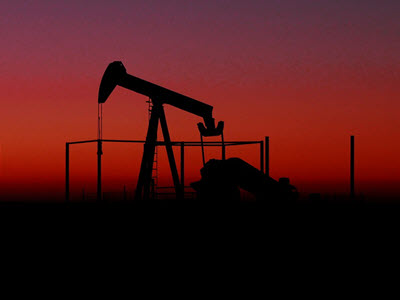Essay from The New Normal in Asia Series
Energy Dynamics in a Post-Pandemic World
The Short and Long View
With a sweeping look at the Covid-19 pandemic’s ravaging effects on global energy markets, Mikkal E. Herberg ponders three key questions for what lies ahead. This is the third essay in the series “The New Normal in Asia,” which explores ways in which the Covid-19 pandemic might adjust, shape, or reorder the world across multiple dimensions.
The Covid-19 pandemic has unleashed the force of a tsunami across global energy markets. The lockdown of 60% of the world’s population, causing a brutal and potentially prolonged global recession, has resulted in plummeting energy demand and collapsing prices. Oil, natural gas, and coal, which constitute over 80% of global energy supplies, already faced problems of sluggish demand, oversupply, and weakening prices before this crisis. The markets for these resources have now been swamped by the Covid-19 tsunami.
The damage has been most acute in global oil markets, which are experiencing a collapse in both demand and prices of nearly biblical proportions. The always messy geopolitics of oil have been further scrambled, shaken, and stirred as the Organization of the Petroleum Exporting Countries (OPEC) is put under unprecedented pressure, Saudi Arabia and Russia reboot their oil alliance, and the United States advocates for a new OPEC deal. Electricity use has declined by the most on record, while demand for natural gas and liquefied natural gas (LNG)—the aspirational “bridge fuels” toward a cleaner energy future—has similarly plummeted, sending prices to historic lows.
But the news is not all bad. Carbon emissions are falling at a pace and scale that was previously unthinkable. Global coal use has seen a record decline, whereas renewable energy use has actually increased. And many millions of urban dwellers around the world have briefly experienced clean air and skies for the first time in decades. Nevertheless, as the executive director of the International Energy Agency (IEA), Fatih Birol, noted somberly: “Resulting from premature deaths and economic trauma around the world, the historic decline in global emissions is absolutely nothing to cheer.”
Amid the wreckage and glimmers of hope, what can we say about the early contours of the “new normal” for global energy markets? The truth is we simply have no historical template or experience to fall back on to apply to this new environment. As Nicholas Eberstadt opined in the inaugural essay in this series, the pandemic “appears to be the intellectual equivalent of an unexpected asteroid strike for almost all who must cope in these unfamiliar new surroundings.”
At least three major questions about the future of energy are worth pondering. First, what does the pandemic portend for the future of oil? Oil has been the biggest loser so far, with global demand expected to drop by a staggering 25%–30% in the second quarter of 2020. With the free movement of peoples locally and around the globe at a standstill, lockdowns have crushed the demand for fuel for road transportation and air travel. U.S. oil futures prices went negative in mid-April in a mind-boggling demonstration of the huge dislocations in the market. The April OPEC+ deal between OPEC and key non-OPEC producers such as Russia makes enormous, unprecedented production cuts. Along with cascading price-driven shut-ins of production around the world, this development seems likely to restore some stability in the market by 2021, albeit at a very slow pace. But it may be three years or longer before any real balance is restored to markets.
“Among the many uncertainties in the forecast for oil is what mobility will look like in a post-pandemic world. It seems implausible that we will just blithely return to our old oil-intensive globe-trotting travel and commuting patterns.”
In the United States, shale oil production is spiraling downward and can be expected to decrease by 30% or more, with only the most efficient producers surviving over the long term. Although it still remains the case that “the rocks don’t go broke,” the pandemic has exposed the fragile financial underpinnings of an industry that was already under scrutiny from investors due to chronically poor financial returns. The crisis will represent a historic turning point in the shale oil boom.
Among the many uncertainties in the forecast for oil is what mobility will look like in a post-pandemic world. It seems implausible that we will just blithely return to our old oil-intensive globe-trotting travel and commuting patterns. The accelerated learning curve on working from home via the internet suggests that there may be a step-function change in commuting patterns as attitudes shift. At the same time, however, there are indications that people are avoiding crowded but more fuel-efficient mass transit options in favor of personal vehicles. Many people also may choose to move out of cities to more spacious and safe suburbs and exurbs, which would mean driving more rather than less. So the future of the oil-mobility relationship is still highly uncertain.
More broadly, will the oil market just go back to the previous “normal,” with economic growth and rising oil demand in developing Asia fueling global oil demand? Is this epic meltdown just another one of the many past boom-bust cycles in oil? This scenario frankly seems implausible. The CEOs of both Royal Dutch Shell and BP have admitted that they are unsure whether oil demand will ever return to previous highs. It seems much more likely that the pandemic is offering an early glimpse of a fast-approaching future peak in oil demand, given the rapid expansion of electric vehicles in transportation, rising pressure for a transition to clean energy, and increasingly chronic oil surpluses and declining investment. This is a world where OPEC will struggle to manage competition, where countries heavily dependent on revenue from oil (including Russia) will face serious economic and political pressures, and where only the lowest-cost producers like Saudi Arabia will survive and some oil-producing states will fail.
“In Asia, gas and LNG should become much more competitive against coal and even renewables, particularly in faster-growing, price-sensitive developing countries such as India in South Asia and Vietnam, Indonesia, and the Philippines in Southeast Asia.”
A second important question is what the economic crisis portends for the role of natural gas and LNG as “transition fuels” in efforts to build a cleaner energy future, especially in Asia. As discussed above, the Covid-19 pandemic is occurring at a time when global gas markets are already under enormous pressure from a surge in LNG supplies in recent years. Consequently, the sharp drop in demand has driven prices to bruising historic lows in Europe and Asia. China, which has been the fastest-growing major buyer of LNG, has declared force majeure and refused to take over a dozen large LNG cargoes for which it had already contracted. Nevertheless, looking beyond the immediate crisis, gas should ultimately benefit from a lengthy period of lower prices and gradually strengthening demand. In Asia, gas and LNG should become much more competitive against coal and even renewables, particularly in faster-growing, price-sensitive developing countries such as India in South Asia and Vietnam, Indonesia, and the Philippines in Southeast Asia. More competitive and abundant LNG supplies in Asia should also accelerate the evolution away from oil-linked pricing toward more flexible contracts and delivery options, the development of regional price hubs for gas, and greater supplier diversity.
Nevertheless, the prospect of prolonged low prices will be punishing for many LNG producers, especially in the United States. Asian and European gas prices are now so low that U.S. LNG is simply not competitive, and some U.S. producers are reducing output. Already several planned mega projects have been postponed or shelved. That said, large existing U.S. LNG producers have already established a strong presence in Asia and Europe for the future. Moreover, from a geopolitical standpoint, competitive prices and flexible supplies could also strengthen LNG’s role in the U.S. “free and open Indo-Pacific” strategy as a counterweight to China’s Belt and Road Initiative.
The third and arguably most important question is what the post-pandemic new normal portends for the transition to clean energy and the broader effort to address climate change. Global carbon emissions are forecast to decline by a stunning 8% in 2020, according to the IEA. Moreover, the use of renewable energy (specifically, solar and wind) has actually increased slightly, and other low-carbon sources have fared better than fossil fuels. As electricity demand has fallen, renewables, nuclear energy, and hydroelectricity have marginal costs near zero. Generators thus cut back first on coal and even natural gas, which still have substantial fuel and transportation costs. But the acid test will be what happens as the global economy slowly recovers. Do we go back to business as usual and gradually relinquish the gains that have been made? For example, there was a very sharp rebound in global carbon emissions in the wake of the Great Recession in 2008–9.
At the current moment, the outlook on this front is mixed. On the one hand, there are strong advocates, especially in Europe, arguing that the pandemic response affords an opportunity to engineer a new “green recovery” by deploying massive crisis stimulus spending to build out lower-carbon energy infrastructure. And urban populations that have been enjoying clean, unpolluted skies will likely resist simply reverting back to the old carbon and pollution-based economy. The resilience of renewables during this crisis also shows that they have become among the lowest-cost and most competitive energy supplies.
“Developing Asia and China will be key to real progress on reducing carbon emissions. But China and the rest of the region seem utterly preoccupied with managing the health, economic, and potential political crises caused by the pandemic and, like the United States, have prioritized economic recovery.”
On the other hand, most governments will emerge from this disaster more indebted and financially constrained than ever before. How will they be able to mobilize the scale of funds needed for investment in a green recovery? There is also a profound lack of international leadership, most importantly by the United States. The global response to the pandemic so far has been chaotic, uncoordinated, and outright competitive. The prospect of U.S.-China collaboration on climate change, which would be critical to success, has evaporated in an even more toxic stew of accusations over the source of the virus. Developing Asia and China will be key to real progress on reducing carbon emissions. But China and the rest of the region seem utterly preoccupied with managing the health, economic, and potential political crises caused by the pandemic and, like the United States, have prioritized economic recovery.
The Covid-19 pandemic should not necessarily slow the pace of the global transition to clean energy. In fact, the effects on global markets have in some contexts even increased the prospects for the use of renewables in the future. But given the profound economic and political impact, it also seems unlikely that the pandemic will accelerate this shift over the long term through a green recovery.
Mikkal E. Herberg is a senior advisor at the National Bureau of Asian Research (NBR) and the research director of NBR’s Energy Security Program. He is also a senior lecturer at the University of California–San Diego.

“The New Normal in Asia” series explores ways in which the Covid-19 pandemic might shape or reorder the world across multiple dimensions.
READ MORE ESSAYS IN THE SERIES



